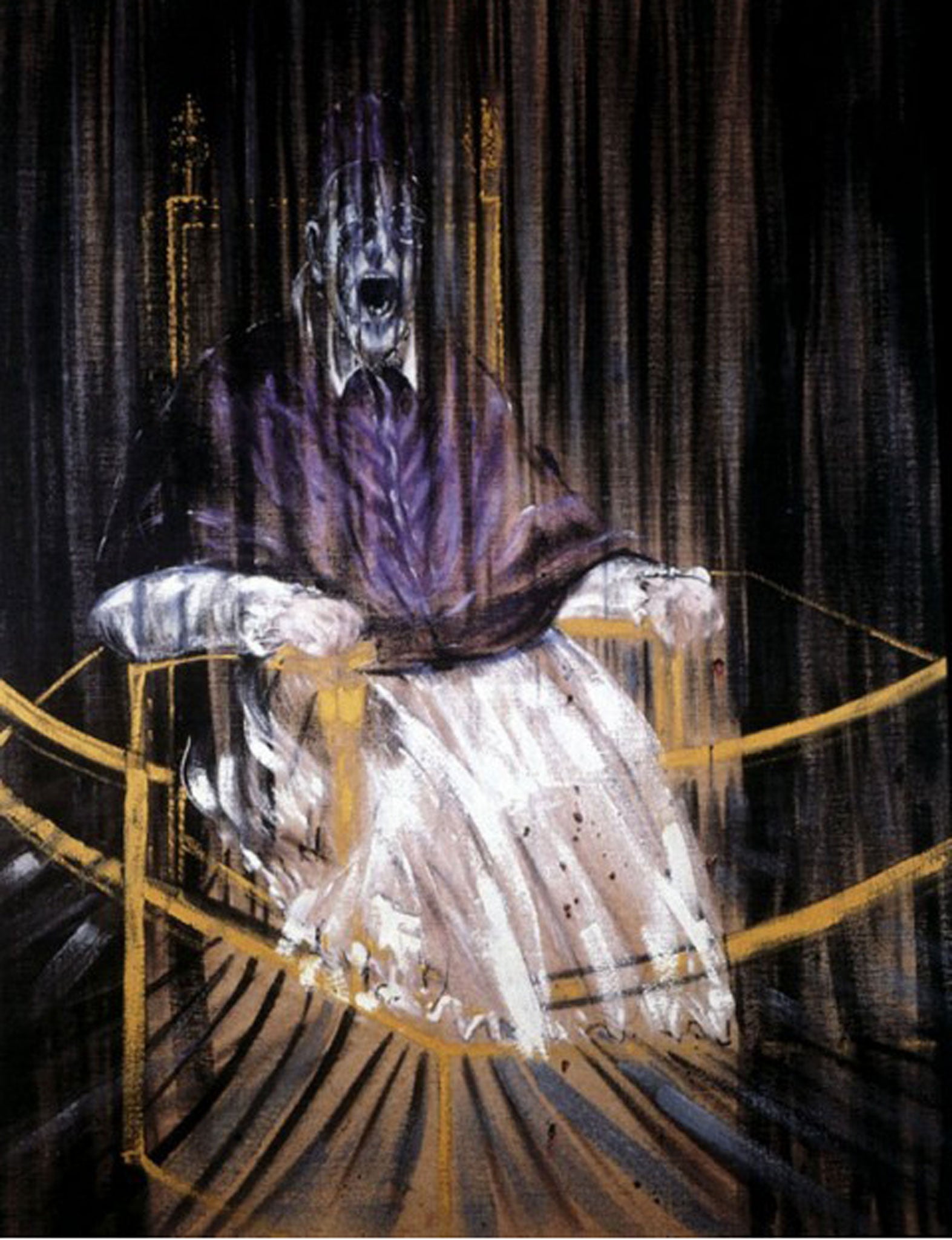Unveiling the Power: Francis Bacon's Iconic Painting of the Pope – A Masterpiece Analyzed
Francis Bacon, a titan of 20th-century art, has left an indelible mark on the world with his haunting and evocative works. Among his most celebrated creations is his series of paintings inspired by Diego Velázquez's Portrait of Pope Innocent X. These works not only redefine portraiture but also encapsulate the turmoil and existential crisis of the postwar era. This article delves into the intricacies of Bacon's masterpiece, exploring its creation, impact, and enduring legacy.
Bacon's reinterpretation of the iconic pope portrait is more than just an artistic exercise; it is a profound commentary on human emotion and the fragility of existence. By distorting the serene visage of the pope, Bacon captures the raw essence of pain, fear, and vulnerability. His use of vibrant colors and dramatic compositions challenges viewers to confront uncomfortable truths about the human condition. Let us now explore the layers of meaning embedded in this powerful artwork.
The Resurgence of London Auctions Amidst Market Shadows
In recent years, London auctions have witnessed a significant upsurge, drawing collectors and art enthusiasts from across the globe. However, this flourishing market was recently overshadowed by an unexpected failure. At Christie's, a much-anticipated Francis Bacon painting, Study of Red Pope 1962. 2nd version 1971, failed to attract a single bid. This event sent ripples through the art community, prompting questions about the current state of the market and the shifting preferences of collectors.
This setback raises important considerations regarding the valuation of modern art. While some speculate that the lack of interest may stem from over-saturation of similar works, others argue that economic uncertainties might deter potential buyers. Regardless, the incident underscores the volatile nature of the art market and highlights the importance of understanding the dynamics driving auction outcomes.
Despite this hiccup, the allure of Bacon's work remains undiminished. His ability to evoke strong emotional responses continues to captivate audiences, ensuring his place among the greats of contemporary art. As the art world evolves, so too does the appreciation for pieces that transcend conventional boundaries.
Postwar Anguish Embodied in Francis Bacon's Screaming Pope
Francis Bacon's 'Screaming Pope' stands as a testament to the anguish and despair that characterized the postwar period. Craig Raine eloquently described the emotions conveyed through these paintings, noting how they express a spectrum of feelings ranging from pain and terror to rage and pleasure. Each stroke of the brush seems to scream the complexities of human experience, inviting viewers to delve deeper into their own emotional landscapes.
On the occasion of a new Francis Bacon exhibition, several intriguing facts about this iconic series have come to light. For instance, Bacon's fascination with Velázquez's original portrait of Pope Innocent X served as the catalyst for his reinterpretations. Yet, despite his admiration for the Spanish master, he never sought to view the original painting in person during his visit to Rome in 1954. This decision reveals the depth of his reliance on memory and imagination rather than direct observation.
Bacon's approach to reworking the pope motif began long before the creation of the Study for a Pope series in 1961. This ongoing exploration allowed him to refine his technique and deepen his engagement with the subject matter. The resulting paintings are not mere copies but transformative interpretations that resonate with universal themes of suffering and resilience.
Reimagining Velázquez: A Journey Through Time
Bacon's Study After Velázquez's Portrait of Pope Innocent X represents a pivotal moment in his artistic journey. Although he revered Velázquez's work as miraculous, his reluctance to see the original painting in person underscores his preference for personal interpretation over direct replication. This creative freedom enabled him to infuse his work with a unique perspective that resonates deeply with contemporary audiences.
Created in 1953, the Portrait of Pope Innocent X exemplifies Bacon's mastery of oil on canvas. Currently housed at the Des Moines Art Center, this piece invites visitors to experience the power of art firsthand. The center itself is renowned for its architectural beauty and commitment to accessibility, offering free admission to all who wish to engage with its impressive collection.
Beyond its aesthetic appeal, the painting serves as a bridge between historical influences and modern sensibilities. By reimagining a classical subject through a postwar lens, Bacon crafts a narrative that transcends time and speaks directly to the human soul. His innovative approach continues to inspire artists and challenge conventions within the art world.
Anguished Visions in the Realm of Humanity
Permeated by anguished visions of humanity, Francis Bacon's paintings embody the existential ethos of the postwar era. In Figure With Meat, the pope is framed by carcasses, creating a stark juxtaposition that amplifies the sense of vulnerability and mortality. This composition forces viewers to confront the harsh realities of life and death, echoing the anxieties prevalent during the mid-20th century.
The Art Institute of Chicago houses a notable example of Bacon's work, further cementing his status as a pivotal figure in modern art. His ability to convey complex emotions through vivid imagery and dynamic forms sets him apart from his contemporaries. Each painting tells a story, inviting viewers to reflect on their own experiences and connections to the depicted scenes.
At the National Portrait Gallery, a painting of a pope dressed in red robes and hat showcases Bacon's skill in capturing both the grandeur and frailty of human presence. Study for a Pope I, created in 1961, exemplifies his dedication to exploring the depths of human emotion. Measuring 1525 x 1195 mm, this oil on canvas masterpiece invites viewers to immerse themselves in its intricate details and profound symbolism.

